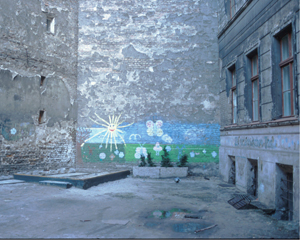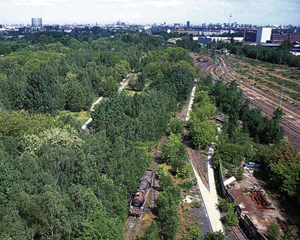Prof. Dr. Ingo Kowarik
Urban Ecology and Design
The expansion of cities into the open landscape leads to the destruction of nature. This view from the 19th century led to the unsolvable conflict between nature conservancy and urban areas, which continues to have an effect to this day. However, urban ecological research in the second half of the 20th century opened a new view on cities:
• Climate, soil, hydrologic balance as well as the animal and plant world of cities differ significantly from that of the surrounding landscape (i.e. cities as ‘islands of warmth’).
• Cities, however, are by no means ‘biological deserts’ but rather – at least in Central Europe – hotspots of biodiversity.
• The nature that has developed in specific urban environments is the end product of a long process that began with the transformation of original natural landscapes to traditional cultural landscapes (Nature 1 => Nature 4).
• An essential characteristic of many cities is the multifaceted mosaic of different environments showing the various stages of transformation of original nature. The question of the ideal nature becomes, as a result, the question of the kind of nature most appropriate for a specific place.
Urban nature with its diverse characteristics can fulfill functions essential for the quality of life in cities.
• Ecological functions (i.e. mitigation of climatic pressures in urban areas, dust absorption, water supply regulation, creation of biotopes)
• Social functions (i.e. recreation, closeness to nature, identification with one’s neighborhood or district)
• Economic functions (i.e. locational advantages)
These functions accrue from quantitative factors (building volume, biomass, percentage of hard surfaces); to some extent they are dependent on site-specific peculiarities of urban nature. The ability to recognize the resulting potentials but also deficits is the greatest challenge for design and development of urban green areas. Taking into consideration ecological elements and processes at this juncture, stronger than in the past, will lead to the enhancement of traditional design concepts in landscape architecture
© Dr. Ingo Kowarik 2010
Literature:
– Sukopp, Herbert und Rüdiger Wittig (Hg.): Stadtöko- logie. Ein Fachbuch für Studium und Praxis,Stuttgart 1988.
– Landolt, Elias: Flora der Stadt Zürich, Basel/Boston/Berlin 2001.
– Kowarik, Ingo : Neue Wildnis. Naturschutz und Gestal- tung, In: Garten und Landschaft 114 (2004), H. 2, S. 12-15.
– Kowarik, Ingo und Lorenz Poggendorf: Südgelände: Vom Natur- zum Erlebnis-Park, In: Garten und Land- schaft 114 (2004), H. 2, S. 24-27.
– Kowarik, Ingo: Stadtbrachen als Niemandsländer, Naturschutzgebiete oder Gartenkunstwerke der Zu- kunft?, In: Geobotanisches Kolloquium 9, Frankfurt a. M., 1993, S. 3-24.




